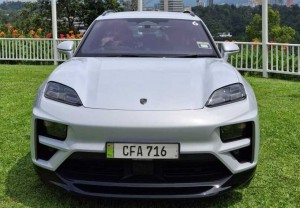Insight into 11th-gen Honda Civic hybrid
By CARSIFU | 15 November 2022
PETALING JAYA: CarSifu spoke to Honda Civic e:HEV RS' large project leader Tomoyuki Yamagami in a virtual interview a day before the official launch of the 11th-generation Honda Civic hybrid.
For starters, the range-topping Civic e:HEV RS variant features a new 2.0-litre Atkinson-cycle direct injection engine coupled to a series-parallel hybrid system which helps the engine develop a system output of 184hp and 315Nm.
A hybrid vehicle possessing a more complex and versatile series-parallel hybrid system allows the vehicle to engage both an electric motor and internal combustion engine to run concurrently or exclusively from each other - depending on the driver's throttle input and/or driving conditions - much like what the Toyota Prius hybrid system when it was introduced in Malaysia.
One of the major breakthroughs Tomoyuki pointed out was that his team managed to put the system through a weight-reduction course before further improving its overall performance.
"The e:HEV's new hybrid system has been improved and lightened with a difference of just 100kg separating the e:HEV RS and Turbo RS," said Yamagami who was speaking from Japan.
Yamagami added that the e:HEV's excess weight compared to the Turbo RS has been equally split (50-50) between the front and rear axles - all for the sake of weight balance.
With the e:HEV's added weight, "the suspension was also changed, specifically the springs and dampers," said Yamagami.
Meanwhile, his engineering team managed to drop the e:HEV's centre of gravity by 10mm and this has helped to enhance and realise better overall performance and dynamism.
When speaking about the progress made on the hybrid system, Tomoyuki pointed out that the previous system was quick to engage the engine which brought about excessive noise from high engine speeds.
Currently, the new 2.0-litre direct-injected engine has not only become more efficient but also less eager to rev up for a more refined experience.
Yamagami gave the example that the engine will react accordingly to the driver's throttle input, much like if the person were to be driving with just an internal combustion engine alone.
Likewise, the engineer also pointed out that the engagement of the electric motor has also become far less perceptible.
Lastly, to ensure comfort levels are maintained for rear-seated passengers, Yamagami indicated that the battery (located beneath the rear bench) had some access to cooling.
Yamagami explained that the battery compartment has ducts incorporated under the rear bench, allowing for the cooled air produced by the air conditioning system to vent in and out from the cabin, through the process of convection. - JAY WONG
Tags
Autos Honda
Reviews

Porsche Macan EV: Re-energised exhilaration

All-electric Leapmotor C10 SUV ticks all the right boxes

New Kia Sportage: Versatile and stylish

6.6
Triumph Scrambler 1200 X: A good balancing act

8.3
Mercedes-AMG GLA 45 S 4Matic+: Poking the pocket rocket

8.0
Moda Sporter-S 250: A new player in town

Porsche Taycan E-xperience drive: Kuala Lumpur - Kuantan

Mercedes-Benz E 350 e PHEV: Refined elegance, timeless prest...
Videos

StarCarSifu Editors' Choice Awards 2024: Top winners

The Snowball – Lamborghini’s Heartwarming Christmas Story of...

EVOGO battery swapping solution showcased at IAA Mobility 20...
